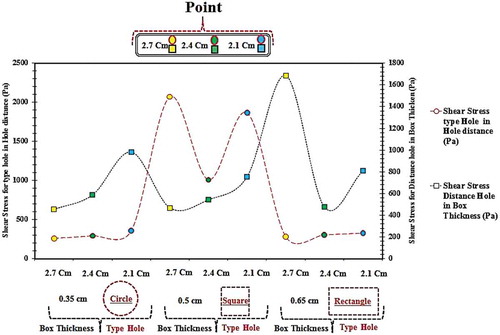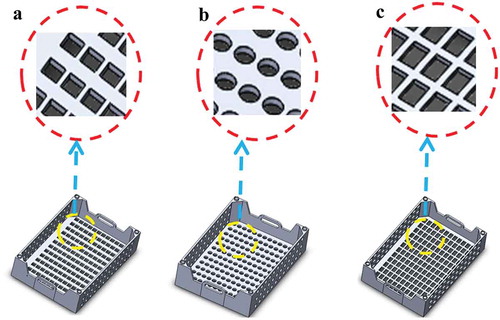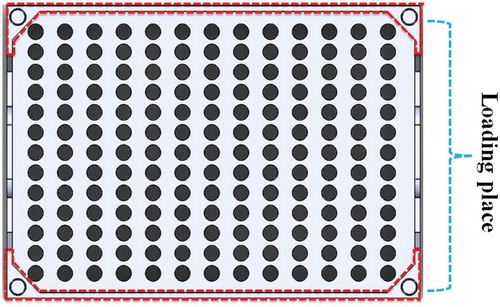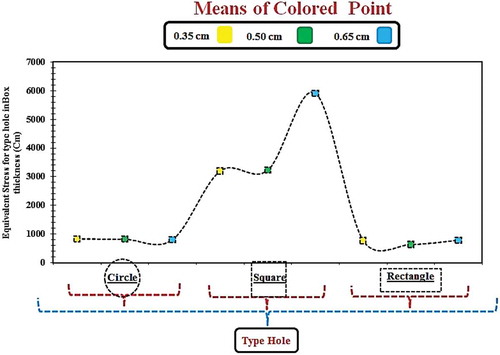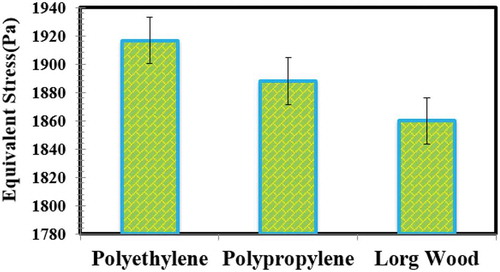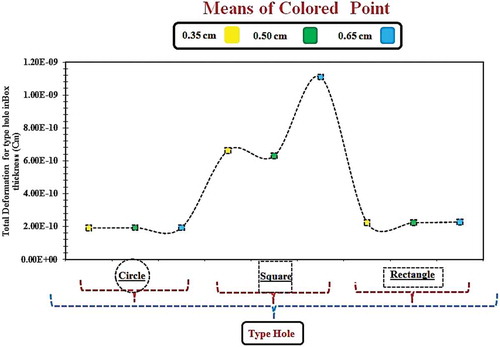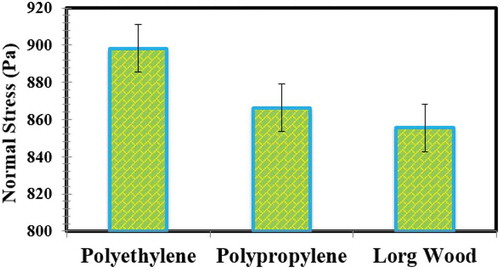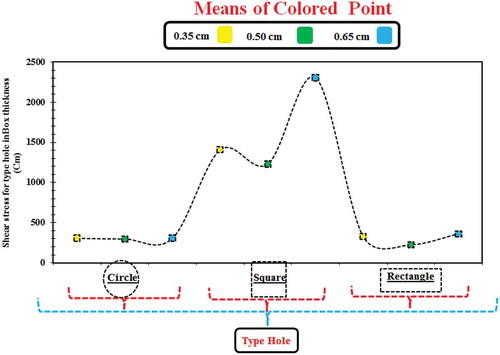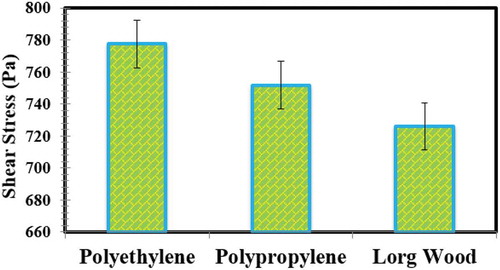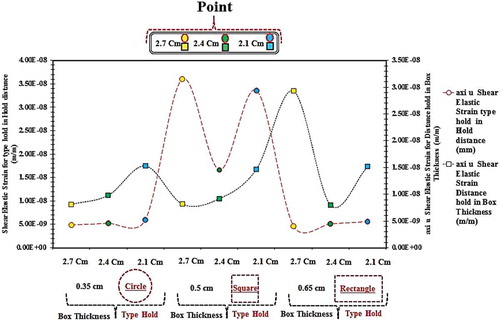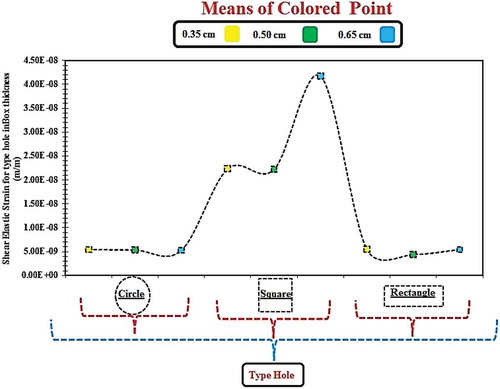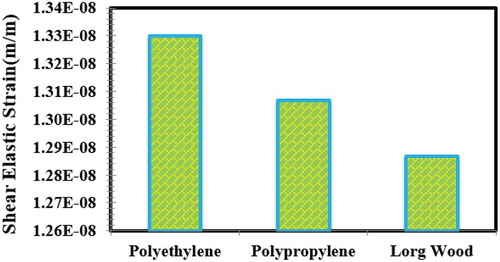Figures & data
Table 1. Specifications of each invoice.
Figure 1. The size of the intended spaces; a) holes’ spacing on floor; b) body thickness of the box; c) holes’ spacing on the box body; d) box width; f) box height.
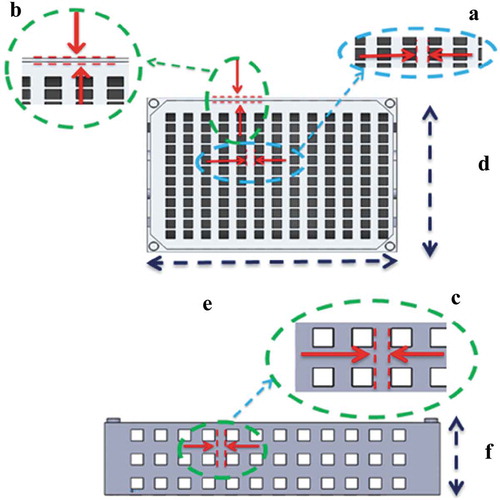
Table 2. Structural specifications of the designed boxes’ material.
Table 3. Variance analysis of maximum equivalent stress, equivalent elastic strain, shear elastic strain, normal stress and shear stress exerted on the boxes and total deformation.
Figure 4. Red line: the mutual effect of the holes’ spacing and holes’ type on equivalent stress. Black line: the mutual effect of holes’ spacing and box edge thickness on the equivalent stress.
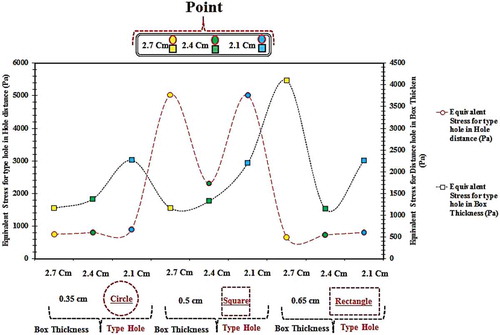
Figure 7. Red line: the mutual effect of the holes’ spacing and holes’ type on total deformation. Black line: the mutual effect of holes’ spacing and box edge thickness on total deformation.

Figure 10. Red line: the mutual effect of the holes’ spacing and holes’ type on the equivalent elastic strain. Black line: the mutual effect of holes’ spacing and box edge thickness on the equivalent elastic strain.
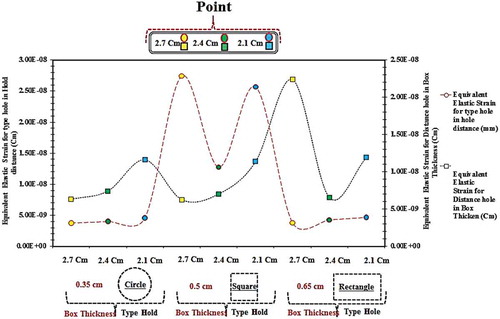
Figure 11. The mutual effect of types of the box holes on box edge thickness on equivalent elastic strain.
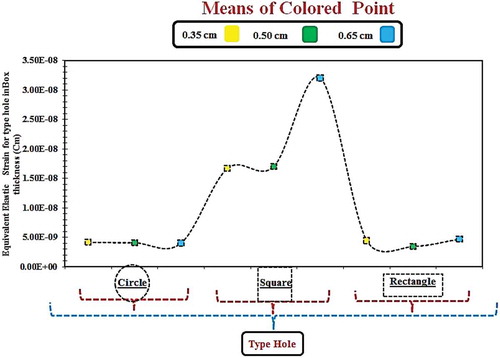
Figure 13. Red line: the mutual effect of the holes’ spacing and holes’ type of normal stress. Black line: the mutual effect of holes’ spacing and box edge thickness on normal stress.
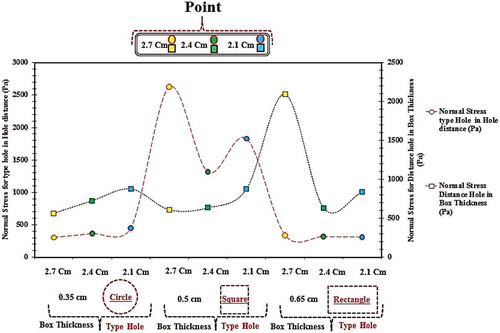
Figure 16. Red line: the mutual effect of the holes’ spacing and holes’ type of shear stress. Black line: the mutual effect of holes’ spacing and box edge thickness on shear stress.
